Wondering how to identify different types of fabric? Perhaps you’re ready to learn more about the types of fabrics and how they can be used when making your own clothes?
If the above sounds like you then this epic guide on fabric types is just for you!
Note that while I use the word fabric, some people refer to fabric as cloth, material or textiles. Whether you’re looking for types of cloth, clothing material or types of textiles, if you plan on sewing it into garments it’s all the same thing, but I use the word fabric for consistency!
When you think about fabrics, what is the first thing that comes to mind? Do you picture something in your home? Do you see an item of clothing you’re currently wearing?
Or do you see the different aspects of fabric:
- The ‘fiber’ content?
- The fabric ‘structure’?
- The ‘type’ of fabric?
Let’s look at what each of the above really means first!
If you need more help, I also have an article on how to choose fabric for clothing!
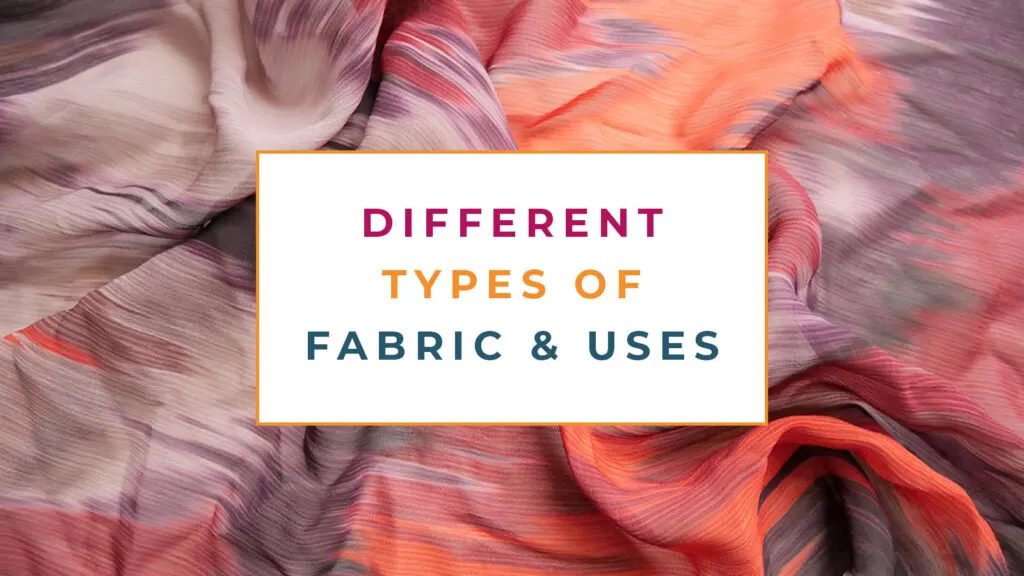
Note: Some of the links in this article are affiliate links. This means that I may receive a commission if you make a purchase, at no extra cost to you.
If you’d like to check out printed resources, these are some of the best books on fabric types used in fashion that I can recommend from personal experience:
- Fabric sewing guide – my absolute favorite since my fashion school days, but can be hard to find
- Fashion designer’s textile directory – perfect for fashion design students
- The swatch book – contains fabric swatches so you can get a better understand of the fabrics feel and texture
- Mood guide to fabric and fashion – who hasn’t heard of Mood fabrics? This is their guide to fabrics!
- Textile directory – an amazing resource at a more affordable price point
Let’s start by understanding fiber content!
What Is Fiber Content?
Fiber content refers to the fiber making up the fabric. Fabrics can be created from a single fiber (cotton, linen, silk etc) or as a blend (poly cotton).
Often you’ll see lists of ‘types of fabrics’ but they’re actually lists of fiber types:
- Cotton
- Polyester
- Silk
- Bamboo
- Hemp
- Wool
- Linen
- Acetate
The above are just some I’ve seen that are incorrectly attributed to fabric types.
Another consideration for fiber content is whether the fiber is:
- Natural
- Manufactured (man-made)
- Animal
Let’s look at each of those now.
Natural Fibers
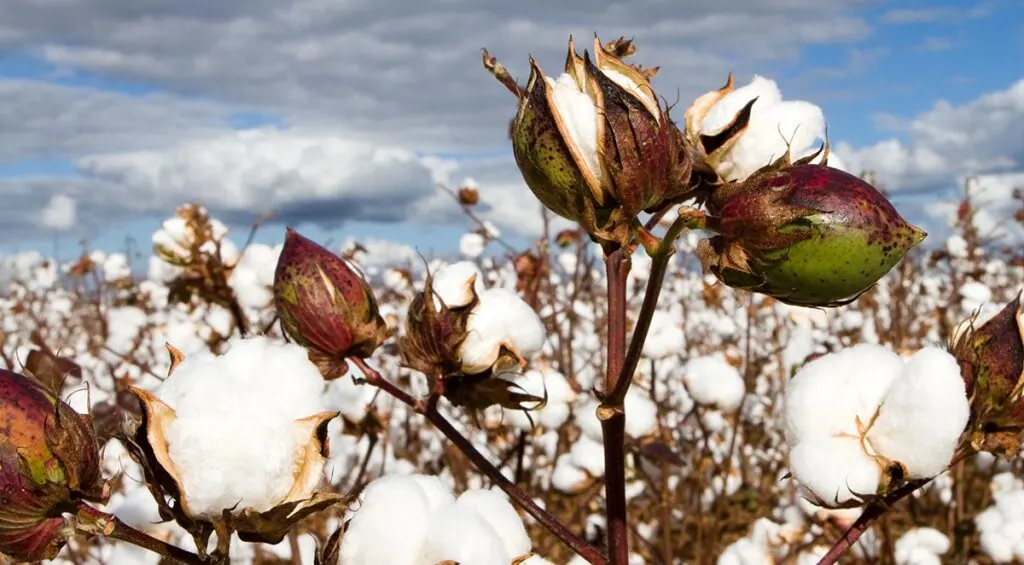
Natural fibers are grown in nature – hence the ‘natural part! – and can be both cellulose fibers (cotton) or protein fibers from animals (silk).
You can learn how cotton fabric is made and the different types of cotton fabric!
Manufactured Fibers
Manufactured fibers refer to those that are not found naturally, but instead are created by man, whether from cellulose fibers (rayon) or derived from other means like petroleum (polyester)!
Animal Skins
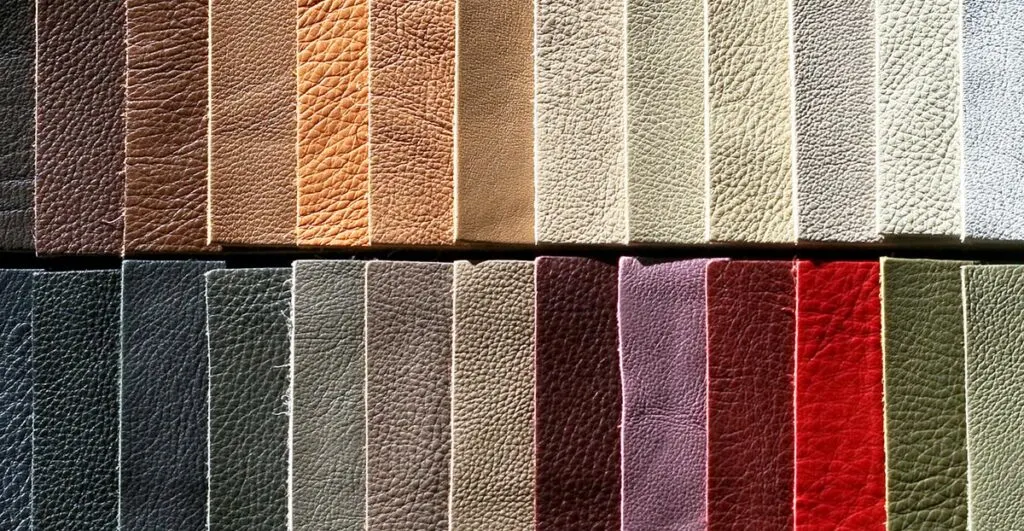
The skins of animals are not ‘fibers’ but they are often viewed as a type of fabric. Just like manufactured and natural fibers, the skins of animals need to be treated before they can be used.
Animal skins are:
- Leather (outside grain of skin)
- Suede (inside grain of skin)
- Wool on skin (shearling)
- Furs (rabbit)
I’ve separated the last two because shearling is often finished in a way that the skin side can be worn unlined, while with furs, garments are usually lined.
I’ve written an extensive guide looking at the differences between man made fiber vs natural fiber vs synthetic fibers and I also have a guide to the different types of leathers too.
What Is Fabric Structure?
When we talk about the structure of fabric, we’re referring to how the fabric is made:
- Woven fabrics
- Stretch fabrics
- Knitted fabrics
Woven Fabrics

Fabrics that are woven, have a warp and a weft, and are woven on looms. They often have tightly woven edges – called the selvedge – and there are many weave types to create different effects.
The most common are:
- Plain weave
- Satin weave
- Twill weave – you can learn more about what twill fabric is here
- Denim weave
- Waffle weave
- Brocade weave
But there are many, MANY more!
Now that I have a rigid heddle loom of my own, I am particularly interested in the different weave styles, so expect to see more examples and content around this in the future!
Stretch Fabrics
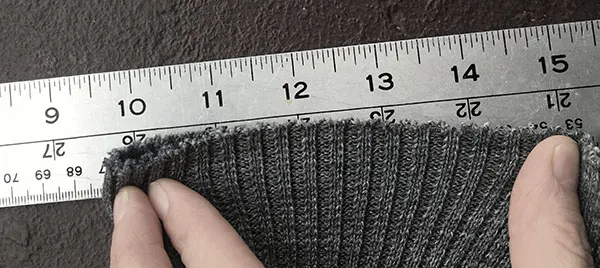
Stretch fabric is its own type of fabric structure as it is often woven with stretch materials making up a percentage of the fiber content, giving that stretch factor.
Stretch materials that are often included are:
- Elastane
- Spandex
Fabrics that have stretch added in this way are usually better for stretch recovery than knitted fabrics.
RELATED CONTENT:
Knitted Fabrics
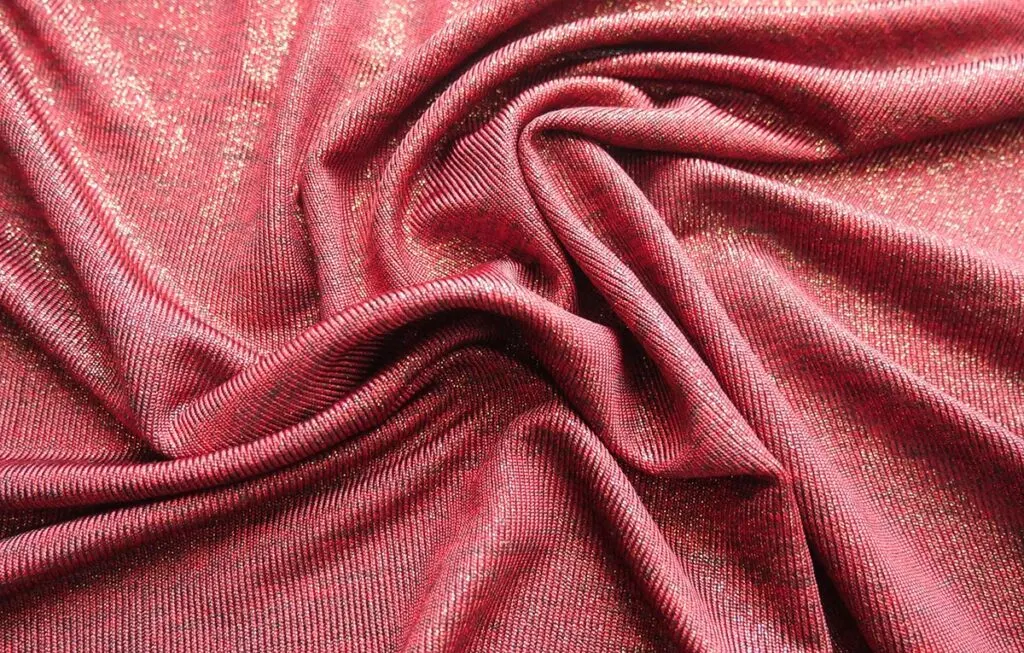
Knit fabrics are constructed from connected loops and can be created from:
- One continuous yarn (weft knit)
- Many yarns but only one stitch (warp knit)
Yes, many knitted fabrics are often stretchy, with the fabric created able to mold close to the body or drape in loose folds.
Patterns created for knitted fabrics will often have ‘negative ease’ included, meaning the pattern is smaller than the intended body, to account for the additional ‘stretchiness’ of the suggested fabric.
Check out my in-depth guide to different knit fabric types here!
Different Types Of Fabrics
Now that you have an understanding of fiber content and fabric structure, let’s move on to all the different fabric types!
This is an in-depth guide, so take your time, make notes as you need them, and enjoy!
Sheer Fabric Types
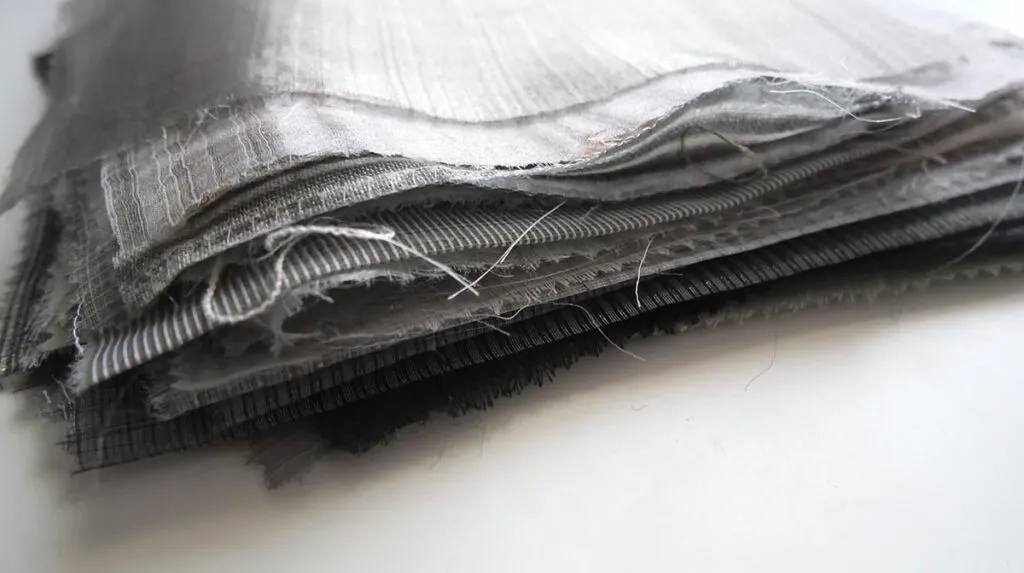
Let’s start with the fabrics that are more transparent than other fabric types!
- Batiste
- Challis
- Chiffon
- Eyelet
- Gauze
- Georgette
- Lace
- Lawn
- Net
- Organdie
- Organza
- Tana lawn
- Tulle
- Voile
Do also check out my guide to the different types of sheer fabric but here’s a quick look at each in turn:
Batiste
Batiste is a plain weave fabric, lightweight and made from different fibers.
Challis
Another plain weave fabric, challis, is great for sewing beginners because it is easy to sew. Being lightweight, it is great from lightweight garments!
Chiffon
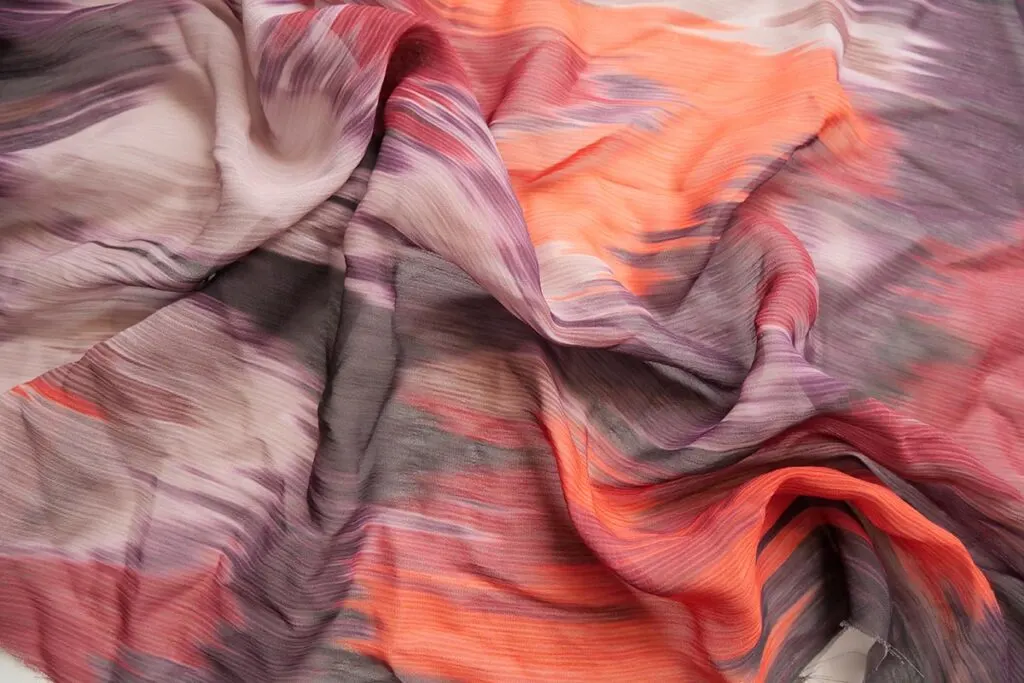
One of the sheerest fabrics that I have worked with – super slippy to boot so not the best for sewing beginners! – chiffon is a plain weave fabric made from natural fibers (silk chiffon) and artificial (poly chiffon).
I have created a great resource on what chiffon fabric is and how to sew chiffon – do check that out if chiffon is a fabric you’d like to sew with!
Eyelet
Eyelet fabric is an embroidered fabric featuring small embroidered holes. This technique can be applied to many different fabric types and fabric weights.
Gauze
Used for curtains historically, gauze is a woven fabric made in a variety of fibers, and is now used for more casual garments as well.
Georgette
Often confused with chiffon, georgette is also made from silk or polyester but has a more crepe finish than chiffon. You can learn more about the different types of georgette fabric here!
Lace
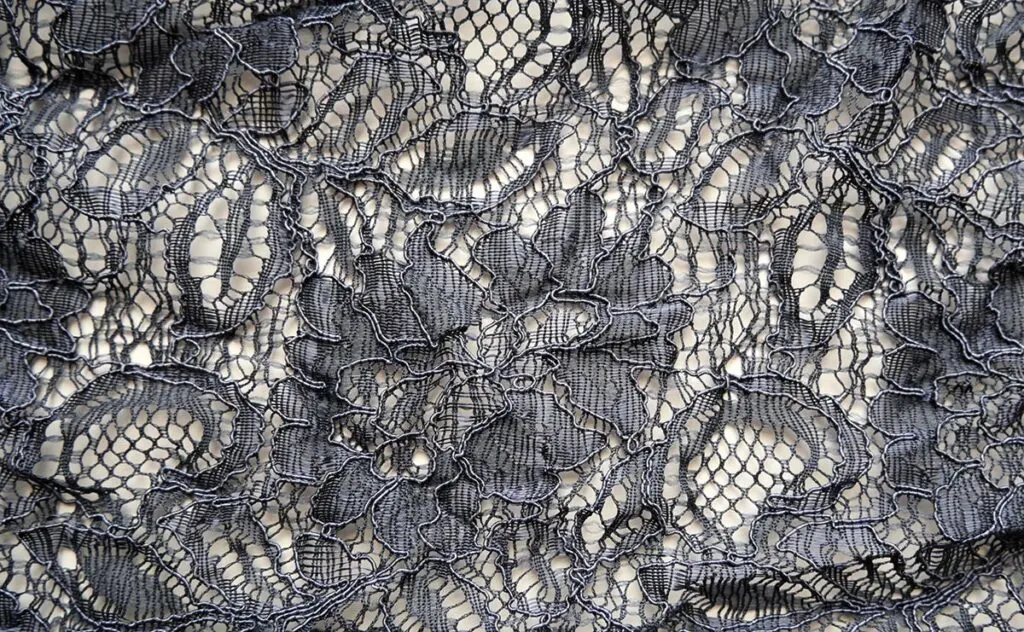
Lace is first and foremost a decorative type of fabric made from many different fiber types!
Lace has many uses, the choice often depending on the weight and stiffness – you can learn more about the different types of lace, and how to sew them!
Lawn
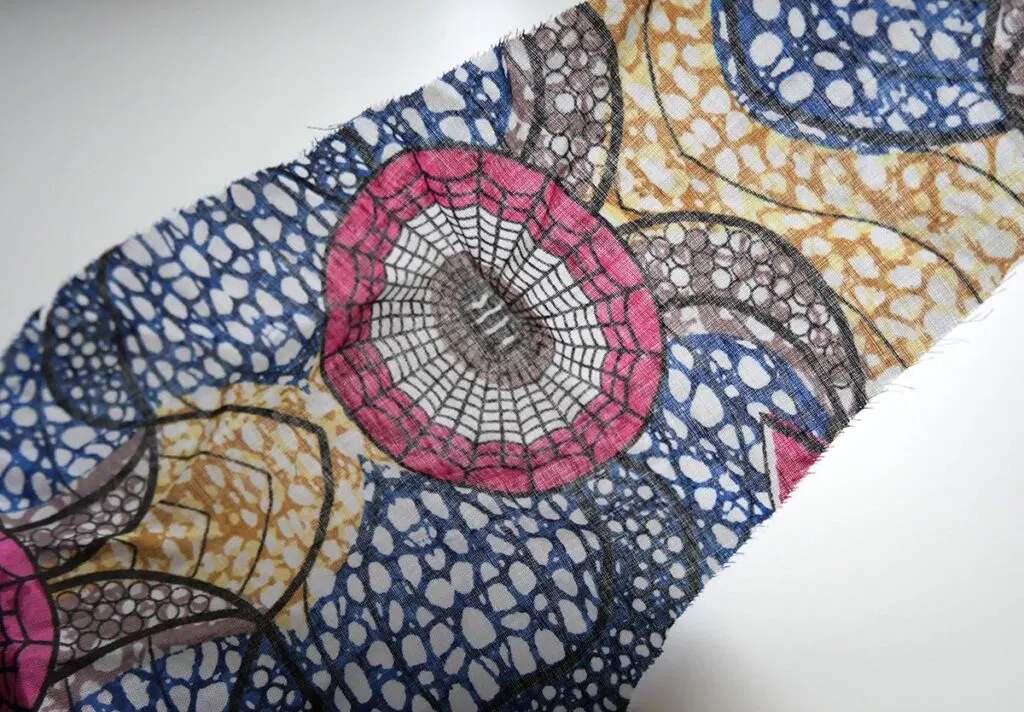
I love lawn fabric! It’s a medium crisp fabric type due to the higher thread count used to weave it, and has a fine finish, and yet is still quite sheer as can be seen in the photo above!
I’ve used cotton lawns for summer shirts and tops as well as a pair of my favorite loose fit trousers!
Learn more about how cotton fabric is made here!
Net

Net fabric is a meshed fabric, created in different weights, and is most often associated with costumes and hats.
Organdie
Made from combed fibers, organdie – also known as organdy – is a tight plain weave fabric often used for interfacings because of its stiffness and sheerness!
Organdie is also used as an interfacing fabric in sewing too!
Organza (and Gazar)
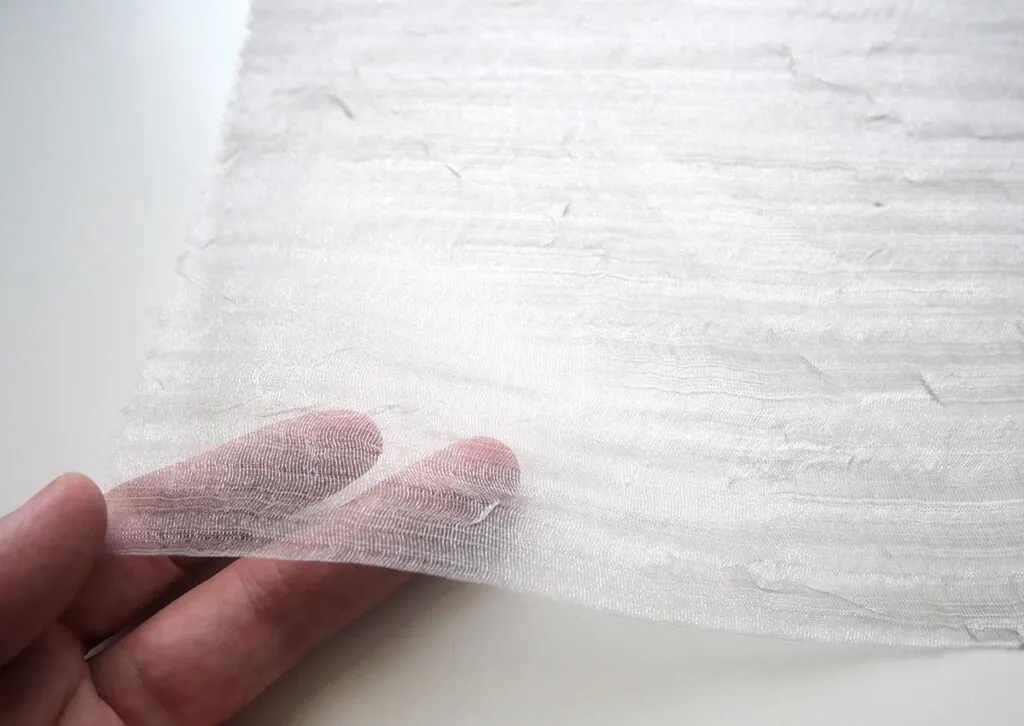
Organza is a plain weave fabric, made from silk (beautiful) or polyester (cheap) yarns, and usually quite translucent.
When it is very heavy and almost opaque it is known as ‘gazar’.
Tulle
Tulle is a type of net, made from hexagonal mesh. It is fine and very drapey and there are many types of tulle fabric to choose from!
Voile
Another fabric made from either natural or manufactured fibers, voile is semi-crisp.
Lace Fabric Types

As mentioned further up, lace is a decorative fabric type and can be manufactured in different fabric weights, fibers and styles!
- Alençon Lace
- Allover Lace
- Breton Lace
- Chantilly Lace
- Cluny Lace
- Embellished Lace
- Filet Lace
- Guipure Lace
- Tape Lace
- Val Lace
I have this guide to different types of lace if you’d like to learn more about lace!
Special Occasion Fabrics
The fabric types in this section are usually the fabrics we create garments for important occasions from:
- Anniversaries
- Christenings
- Weddings
Special fabrics used for the above occasions can be:
- Sheer fabrics (chiffon, organza, tulle)
- Lace fabrics
- Satins
- Brocades
- Embellished fabrics
I’ll skip over sheer and lace fabric types as I’ve already covered those.
Satins

Satin fabrics are made with the satin weave, which gives the fabric a gorgeous shine on one side.
Satins can be drapey and silky, or stiff and structured.
Usually, they fray like crazy when cut into so they aren’t really a beginner friendly fabric type!
Brocades
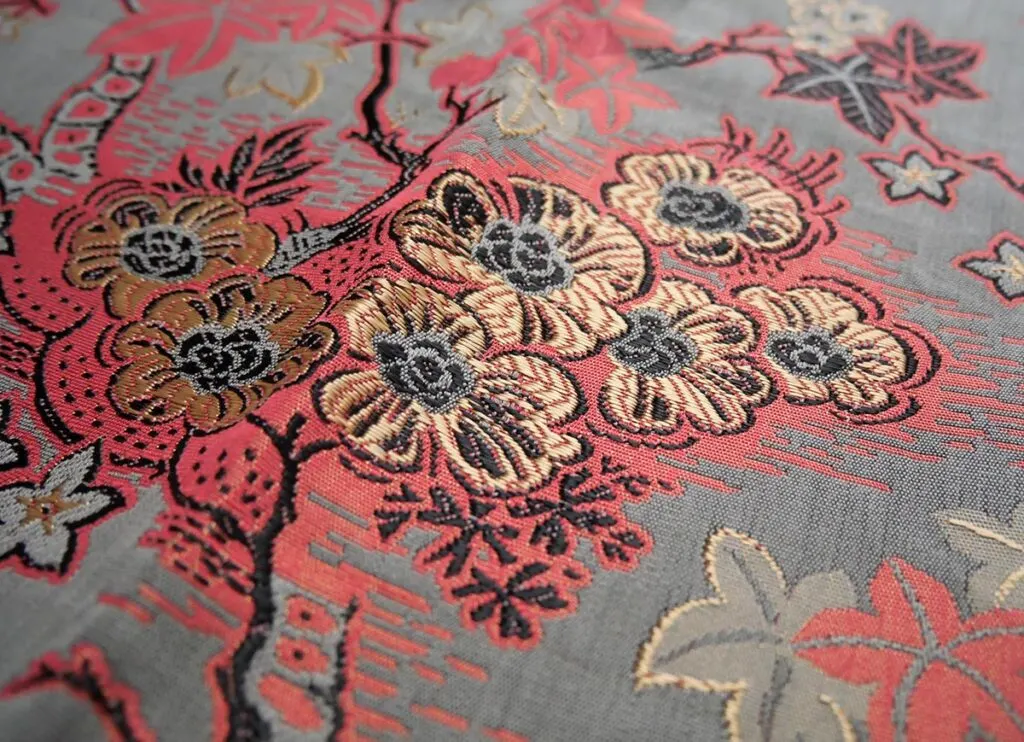
Brocades are beautiful fabrics with a permanent design created on the surface of the fabric’s right side.
Woven on a jacquard loom, brocade is available in different fabric weights.
RELATED CONTENT:
What is jacquard fabric? (Brocade is included!)
Embellished

Fabrics that are embellished can be laces, brocades, tulle and more! Embellishment can be:
- Sequins
- Beads
- Crystals
- Glitter
Piled and Napped Fabrics

Fluffy fabric types that have a pile are often referred to as napped fabrics, but pile and nap are two different things.
When sewing with piled fabric, be aware that you need to cut your sewing patterns on-grain with the nap. Don’t be like a fellow student of mine when I was still in fashion school – they cut the back of a faux fur jacket the wrong way, and it was only upon sewing the front sections to the back that the mistake was noticed!
Types of nap and pile fabrics are:
- Chenille
- Corduroy
- Faux fur
- Fleece
- Terry
- Velvet / velour
Chenille
Chenille is created by punching tuffs through existing fabric. The tufts can be short or longer. Imagine the tufts created similar to how a punch needle works!
Corduroy
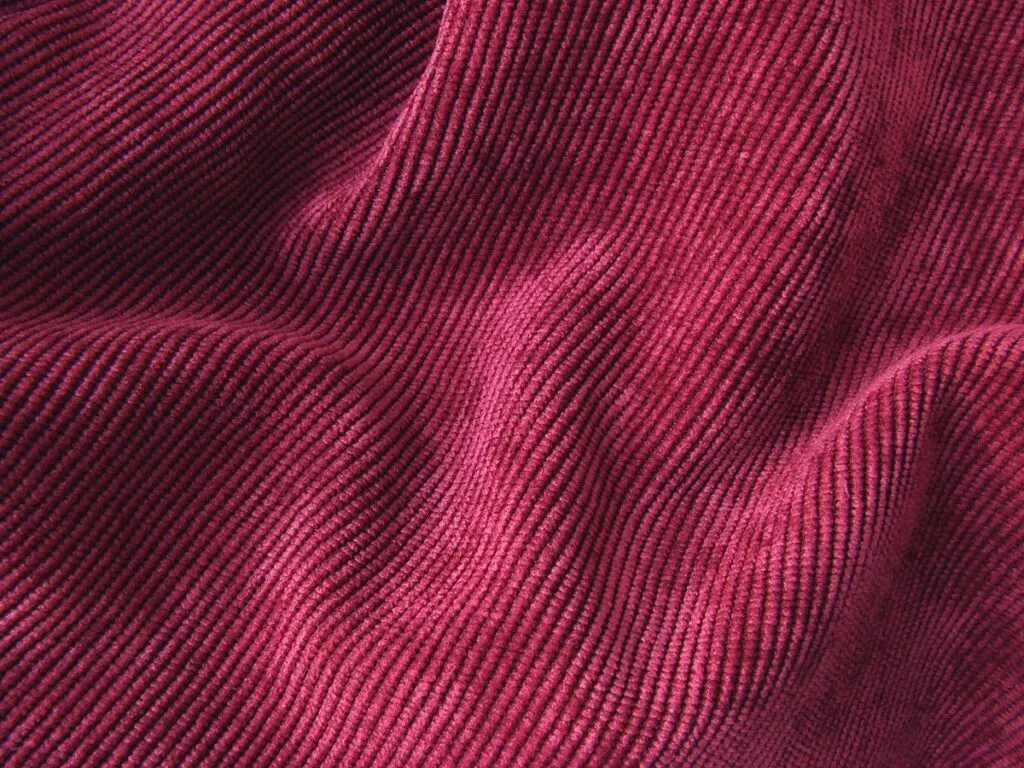
Corduroy looks like a ribbed fabric, with vertical stripes but is in fact a pile fabric.
Faux Fur
Another popular pile fabric is faux fur, which is quite often referred to as a deep pile fabric due to the longer lengths of the pile.
If you have an interest in faux fur, you might enjoy my recent article looking at the ethics and sustainability of faux fur vs real fur.
Fleece
Made with wool or hair, fleece is one of those fabrics that gives me the heebie-jeebies! It’s usually a very soft fabric with a pile.
Terry

Terry fabric is made with uncut loops. There is no nap to the fabric and is used for towels, robes and more.
Velvets
Velvet fabrics (velvet, velour, velveteen) have a short pile.

Personal note: I hate velvet. The photo above is a paid stock image because I would never have velvet in my stash.
You can also learn more about the different types of velvet and their uses here!
Felt Fabrics

Felt fabrics are great because they are no-fray because the fibers used are felted with water.
Fabrics created using the felting technique are made from wool, mohair, cotton, rayon, fur and some synthetic fibers.
Double Faced Fabrics

Fabrics that have two usable sides are referred to as double-faced and are naturally created during the fabric construction process, whether woven or knitted.
As both sides of a double faced fabric can be used, they don’t really have a ‘wrong side’ which makes them perfect for anything you plan to make that will be unlined!
Double-Cloth Fabrics
This type of fabric is created from two layers of fabric, and like double-faced fabrics, are reversible.
Creating double-cloth fabrics can be done by a specific weaving technique, sewing layers of fabric together or fusing them with double sided fusing, like bondaweb.
During my internship at Roland Mouret, I learned the process of ‘Arignée’ – fusing two layers of fabric together with the ‘spider web’ fusing to create a new and unique fabric.
This tutorial shows how to fuse fabrics together yourself!
Quilted Fabrics
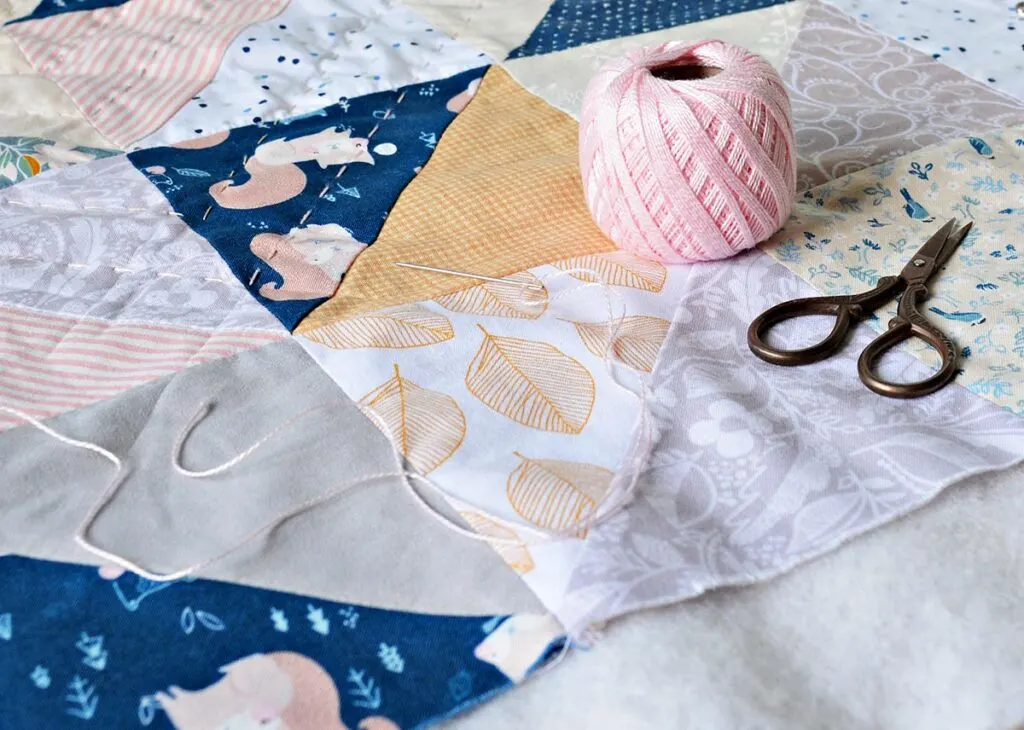
Quilting is a technique that is used to sandwich a filler fiber between two layers of fabric. This can be done by machine or hand.
Quilted fabrics can be purchased ready made, or you can learn the process of quilting to make your own.
Depending on the weight of the fabrics and the filler used in the quilting process, the resulting quilted fabric can end up quite heavy and bulky.
Filling Options
- Polyester batting
- Cotton batting
- Bamboo batting
- Wool batting
Quilted fabrics have been used for both casual and occasions-wear garments for some time.
Plaid Fabrics

Plaid – when woven or knitted and *not* printed! – is a repeated pattern created during the weaving and knitting process.
Plaid (and tartan) can be quite bold, or more subtle like the photo above.
Plaids can be balanced and unbalanced – the latter being much trickier to pattern match so not advisable for sewing beginners!
Technical Fabrics

Types of fabric in this category are usually created for specific use:
- Exercise
- Water activities
- Outdoor activities
Exercise Fabrics
These are fabrics that are used to wick away moisture during activities like cycling, skiing and running.
Water Activity Fabrics
Swimwear and other clothing for water sports are obvious here, with suitable fabrics ranging from lycra to neoprene.
Fabrics should allow for plenty of movement, and fit close to the body.
If you’re looking for a fabric that is suitable you can learn more about 2 way vs 4 way stretch fabrics which cover swimwear fabrics!
Outdoor Activity Fabrics
The fabrics used to create garments for outdoor activities could be lightweight and wicking for the summer months or insulating and weatherproof for those colder (and wetter!) winter months.
Frequently Asked Questions About Fabric Types
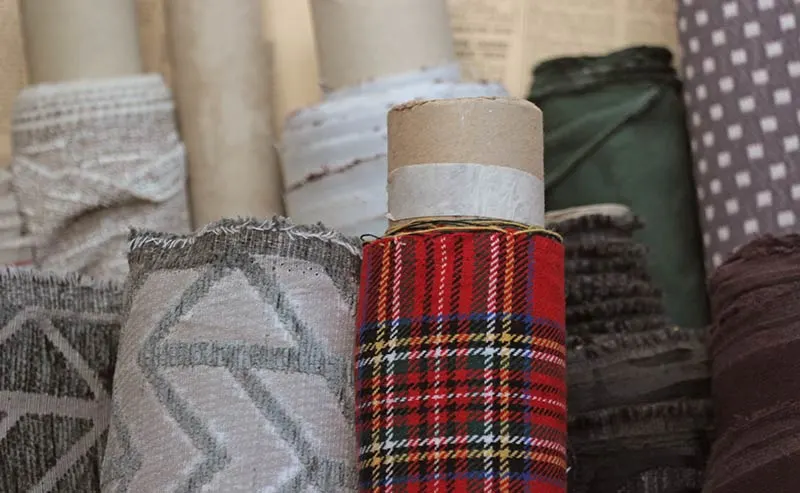
Let’s finish with questions about types of fabrics that come up a lot!
What’s the difference between fabric and material?
Fabric is created by the weaving or knitting of fibers.
Example: Organza is a woven type of fabric.
Material is the matter from which something can be made.
Example: Silk organza is a fabric made from silk.
Organza can be referred to as both fabric (woven) but also material (silk).
How can I tell what kind of fabric I have?
The easiest way to know what kind of fabric you have is to run a burn test – following safety precautions! – to find out the fiber content.
Typically:
- Synthetic fibers smell acrid when burned and form hard beads
- Cellulose fibers smell like burning paper or wood and form light ash or become hard and brittle
- Natural fibers smell like burning paper, rope or hair and form ash or brittle beads
Note that the difference in beads is important – brittle beads can be easily crushed, hard beads cannot!
What types of fabrics are used for clothes?
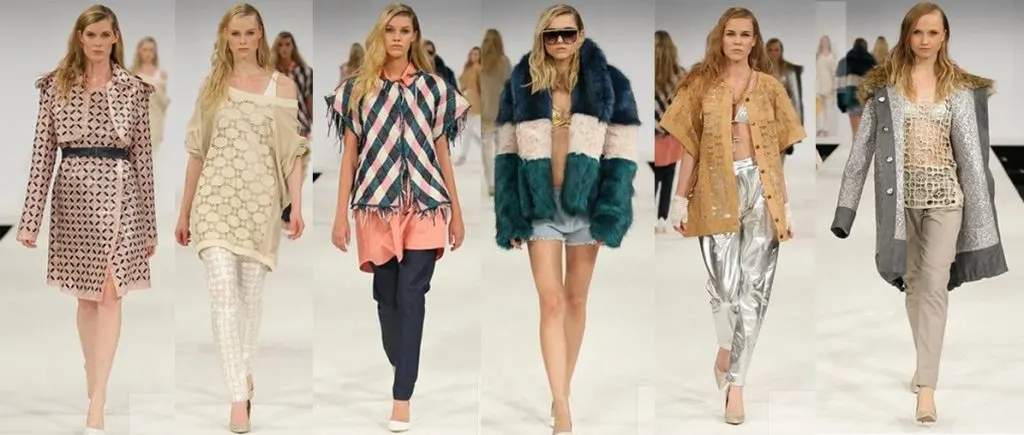
There are many types of fabrics use for clothes – in fact all the fabric types mentioned throughout this article are suitable for clothing!
It’s important though to think about the garment you plan to make and then choose a suitable fabric. Otherwise you could end up with some interesting pieces:
- A quilted denim bikini?
- An organza biker jacket?
- A leather wedding dress?
All of the above would probably look amazing if designed as such, but when done accidentally, there’s a lot that could go wrong. So always think about the garment and fabric type used carefully!
Can I Make A Fabric Stronger?
Absolutely! In sewing, we use interfacing fabric to make our fashion fabrics stronger, but which one you use depends on the fabric type!
What are the types of fabric patterns?
Oh, this is an article in itself I’m sure. Here’s a list of pattern types for you to start with:
- Abstract
- All over
- Argyle
- Batik
- Block print
- Burn out
- Chevron
- Damask
- Floral
- Gingham
- Guilloche
- Half-drop repeat
- Houndstooth
- Ikat
- Offset
- Ogee
- Paisley
- Repeat
- Shibori
- Side repeat
- Square repeat
- Stripes
And of course, within all of the above there are different styles. But I’ll cover that in the next guide!
You can learn more about checkered patterns or animal prints used in fashion.
What is the strongest type of fabric?
The strongest natural fiber is silk – but the silk from spiders, not silkworms! For the strongest fabric made from natural fibers, it’s a very close call. Technically hemp is considered the strongest natural fiber used in creating fabric but with variables such as the way the fiber is spun into yarn and then woven into fabric, it is a close tie with flax / linen!
Dyneema® fiber is currently the strongest synthetic fiber in the world and any fabric incorporating it would definitely be in contention for the strongest synthetic fabric!
Fabric Types Conclusion
Phew! That was an epic guide! The only thing for me to add is that while there are over 28 fabric types listed above, there are many more options available to you when you combine the fabric type with the different fiber options!
Example:
- Silk organza
- Polyester chiffon
- Quilted cotton
- Silk brocade
Yes the above are great combinations – you can of course change them and have poly organza, silk chiffon, quilted silk and cotton brocade!
And then there are some obvious options – denim is only really made with cotton unless a stretch component is added such as elastane or lycra!
So, when selecting a sewing pattern, read the packet to see which fabric types are recommended, but then have a read online, and poke around the fabric stores to see what fabric type and fiber combo is best for you and your needs!
And if this floated your boat pop here to learn more about knit fabric types – it’s another great read! – the different types of interfacing fabrics and the difference between natural fiber, synthetic and manmade fibers here!
I also have a selection of articles covering more specific topics, such as what is gabardine, what is twill and is rayon stretchy.
Finally my fabric based guides cover the different types of lace, tulle, georgette and more!
If you ever need a quick reminder, I have this web story which covers the different kinds of fabric more succinctly!

Rhoda
Thursday 20th of April 2023
I'm interested to learn and download . good work.
NAET
Sunday 9th of April 2023
This is awesome. I have learned so much about fabrics and types. And of course, their uses. Thanks Eve
Eve Tokens
Tuesday 18th of April 2023
You're very welcome Naet, I'm so happy to hear it was helpful to you! :)
Monic Xpranza
Thursday 30th of March 2023
Thank you Eve, this was extensive and really helpful.
Debbie
Monday 27th of February 2023
Hi. I’m looking for a pro cool mesh fabric that I can use to make a blanket to cover a sheep to protect its wool. Can you tell me what might be best?
Patsy Haskins
Saturday 19th of November 2022
I make wig grips and could not find answers about working with stretch velvet and putting 2 pieces together and how to keep the velvet from walking while I sewed. I had to figure a lot out on my own from just experimenting with this mind of its own fabric. Do you have a guide on sewing different fabrics do's and dont's? I use a stretch needle. Would you say that is the best for spandex type velvet? Other tips you can share...thank You...Patsy Haskins
Eve Tokens
Sunday 20th of November 2022
Hi Patsy! First up thanks for your comment. I'm working on a guide for fabric sewing do's and don'ts but it won't be available until the new year. In the meantime, regarding your stretch velvet - is it a true woven velvet or a knitted variety? The tips I can give will depend on which. If it is a woven velvet with small amount of spandex in the weft, then you'd want to use a universal needle rather than a ball point and a roller foot rather than a standard presser foot, to help the two layers of fabric to be guided through at the same speed. And if your sewing machine allows for it, you could also modify the amount of pressure your presser foot had as well, which will stop one layer from moving faster than the other.